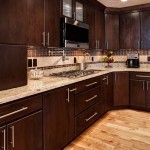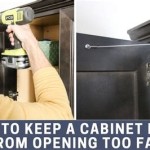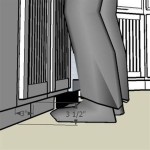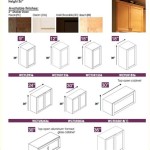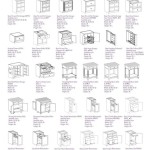Setting Up Kitchen Cabinets and Drawers
Installing kitchen cabinets and drawers requires proper planning, precision, and attention to detail. To ensure a successful and functional setup, consider the following essential aspects.
1. Planning and Design
Start by determining the layout of your kitchen and where you want to place your cabinets and drawers. Consider factors such as the location of appliances, sink, and windows, as well as the flow of traffic in the room. Sketch a detailed plan and measure the available space carefully.
2. Cabinet and Drawer Selection
Choose cabinets and drawers that complement the overall design and style of your kitchen. Consider the material, finish, hardware, and storage requirements. Select durable and high-quality materials that will withstand the demands of everyday use.
3. Cabinet Assembly
Follow the manufacturer's instructions for assembling the cabinets. Use the provided hardware and ensure all components are securely fastened. Use a level to ensure that the cabinets are plumb and square. For large or heavy cabinets, seek assistance from an experienced installer.
4. Drawer Installation
Install the drawers by sliding them into the designated openings. Ensure that the glides are properly aligned and the drawers open and close smoothly. Adjust the glides as necessary for a precise fit.
5. Cabinet Installation
Mount the assembled cabinets to the wall using screws or cleats. Make sure the cabinets are level and securely anchored. Use spacers to ensure equal spacing between the units.
6. Door and Drawer Adjustment
Once the cabinets are in place, adjust the doors and drawers as needed. Tighten any loose hinges or knobs. Ensure that the doors and drawers align properly and open and close smoothly without gaps or friction.
7. Hardware Installation
Add the finishing touches by installing hardware such as knobs, handles, and pulls. Choose hardware that matches the style of your cabinets and provides functionality and accessibility.
8. Caulking and Sealing
Apply caulking around the edges of countertops and backsplash to prevent moisture from seeping in. This will help protect the cabinets and drawers from damage caused by water.
9. Organization
Once the cabinets and drawers are installed, organize them to maximize storage and functionality. Use drawer organizers, shelf dividers, and other storage accessories to keep everything tidy and accessible.
10. Maintenance
Regularly clean and maintain your kitchen cabinets and drawers to prolong their lifespan. Use a mild cleaner and avoid abrasive materials. Wipe up spills and crumbs promptly to prevent stains and damage.
By following these essential aspects, you can successfully set up kitchen cabinets and drawers that enhance the functionality and aesthetics of your kitchen while providing ample storage and organization.

How To Organize Kitchen Drawers And Cabinets Shannon Gold Design

How To Organize Kitchen Cabinets And Drawers For Good

How To Organize Kitchen Drawers Hallstrom Home

Insiders Tip How To Organize The Kitchen Cabinets Smart Way Edgewood Cabinetry

How To Organize Kitchen Cabinets And Drawers For Good

How To Organize Your Kitchen Cabinets And Drawers She Gave It A Go

40 Best Ideas For How To Organize Kitchen Cabinets

How To Organize Your Kitchen Cabinets Step By Project The Container

How To Organize Your Kitchen Cabinets Step By Project The Container

How To Organize Your Kitchen Cabinets In 3 Simple Steps Practical Perfection
Related Posts

